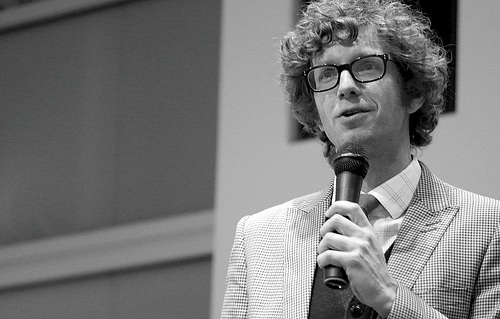Let us know what type of content you'd like to see more of. Fill out our three question survey.
GeekFest 2017: Q&A with Ian Schuler, CEO of Development Seed
Jan 10, 2017

Welcome to Geekfest 2017, a series of interviews featuring ICT4D thought leaders. Our goals in launching #geekfest2017 are: to highlight the people and organizations who are pushing the field in new directions, to feature their work and show how it’s different or new, and to support the growth of the ICT4D community.
We’re kicking things off with Ian Schuler, the CEO of Development Seed, one of the lead organizers and sponsors for the upcoming SatSummit.

From his early professional days at the U.S. Department of State to founding the ICT team at the National Democratic Institute and now as CEO at DevSeed, Ian is passionate about using the most appropriate technologies for pragmatic development activities and solutions. DevSeed’s 2016 highlights can be seen here in its Annual Report.
Q: As you prepare for SatSummit, what trends in satellite imagery, data, and international development are on your mind?
We’ve seen an uptick in requests for remote sensing work. More requests and more thoughtful requests are coming to us—especially around satellite imagery. Before, only a handful of people were really thinking about using this type of data and imagery. Now, with increased outreach from private sector providers such as Planet Labs, Digital Globe, and Terra Bella, which have led to press from Wired and other media, people are really starting to catch on to the possibilities.
The truth is that the potential is there for satellite imagery to make a huge difference but there is still a lot of work to be done to really focus on decision-makers’ needs. There is a danger that due to the increased attention to satellite imagery people might think it can solve all problems, rather than being the best fit to solve a specific problem. I’ve seen this before with certain technologies that show promise—such as the Ushahidi platform when it first came out. Ushahidi’s first uses were so compelling that people wanted to use it for all sorts of things—including some things for which it wasn’t appropriate—before eventually figuring out how best to apply it. SatSummit is an attempt to shorten this learning curve at this uniquely exciting and confusing moment in time.
Now, with advancements in graphics cards, the ability to view and use images has been unlocked for more people. And Amazon Web Services can host, process, and extract value from data. Before, we had to call up imagery providers and get data downloaded and sent to us…via actual mail. We’ve come a long way in the last three years.
In the past, we got lots of requests for data-dump dashboards. This “vomit” of data was practically useless. Now, there is so much more focus on the user as decision maker. And this—combined with advancements in availability and computing—has the potential to increase accessibility to relevant, useful data, and make data available for regular use.
Q. How is this year’s SatSummit distinct from last time?
When we put together SatSummit Round 1, we were not sure that there would be a Round 2. People were so positive the day of the event and afterward and we knew it needed to be done again. The goal of the last one was to get people together—some of whom had never been in the same room before. It was all about making connections among those facing similar problems. And then, to see how we can do better to help the industry.
This time, we’ll repeat some of the “state of play” presentations that people found most useful. We’ve kept these and added more voices from open source data providers, people working in the field, and those working on specific technical problems—such as sharing imagery for disaster response or mosquito mapping or using machine learning for human rights violations mapping—that may only be of interest to a dozen or so attendees. We’ve also incorporated the Sustainable Development Goals and end users. And of course, we kept the networking happy hour afterwards.
Q. What does success look like coming out of SatSummit?
We are excited to see how much we can accomplish together with the small group sessions we have as part of the day. These—we hope—will lead to pragmatic, cross-organizational solutions to how we can do a better job reaching people after an earthquake, or monitor crop health over large areas, or manage disease outbreaks. This can happen through the informed mind share cultivated at SatSummit so that people are designing better projects and writing more informed proposals.
Subscribe to our blog for more in our #Geekfest2017 series! If you want to geek out with us in an interview, shoot us an email at digital [at] dai [dot] com.